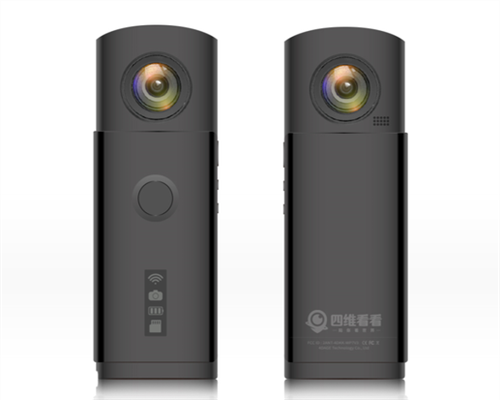The communication of language and culture has consistently been a link in developing of the Belt and Road Initiative. In recent years, many Guangdong enterprises have provided artificial intelligence (AI) technologies such as 3D scanning, intelligent translation for international cooperation and exchange programs.
The Second 21st Century Maritime Silk Road Forum on International Communication will be held on September 19th in Zhuhai. Case studies of two Guangdong-based AI companies (also two participants of the forum), follow below:
3D reconstruction technology preserves cultural relics well
Now people around the world can have an immersive online experience and virtually visit various historical sites and museums along the Belt and Road, thanks to 4DAGE Technology Co., Ltd‘s high-precision 3D reconstruction technology.
4DAGE is a high-tech company based in Zhuhai, focusing on AI 3D digital reconstruction, virtual display technology and services.

On May 9th, 2018, the company launched the world's first consumer-grade 3D camera "4DKK". It enables users to quickly achieve digital 3D modeling of real world objects.
The camera can be used to shoot a 100-square-meter room in just 15 minutes. Users can then upload the photos, and the system will automatically generate a 3D model without manual intervention. This is just one breakthrough 4DAGE has made in 3D digital reconstruction.
Implementing this technology and other relevant products, the company is collaborating with nearly 1,000 museums along the Belt and Road in digital scanning, protection and display of their collections, said Cui Yan, Founder & CEO of 4DAGE.
For instance, in Afghanistan, a number of priceless cultural artifacts, including the Bamiyan Buddha, were destroyed by the Taliban. The company can send in a professional team with equipment for taking pictures and scanning, then through reverse modeling are able to reconstruct the play of light and shadow, material textures and color of the Buddha, recreating this lost treasure in a virtual space.
After the modeling, the 3D visualisations will be incorporated into stories explaining the evolution and dissemination of Buddhist culture along the Belt and Road. According to Mr. Cui, now it is possible to reproduce the changes in the tangible culture of different countries through digital means. The project is one of the company’s highlights this year.

Other institutions involved in the reconstruction project include museums in India and Pakistan, the Mogao and Longmen Caves in China. Right now, 4DAGE is providing precision 3D modeling technology to many well-known museums, exhibition halls and art galleries at home and abroad, such as the Guangdong Museum, Nanchang Han Dynasty Haihunhou Historic Site Museum.
To realize the vision of "Digital Everything", 4DAGE is gathering global top experts on AI and in June 2017, a MoU was signed between 4DAGE and the German Research Center for Artificial Intelligence (DFKI) to expand cooperation with the launch of the first joint projects in the area of semi-autonomous robots and 3D scanning.
Intelligent translation facilitating international communication
With the advancement of the “Belt and Road” Initiative, it is foreseeable that in the future flows of people and capital will increasingly be truly international in scope, for which multi-lingual communication will be essential.

A Shenzhen high-tech company, New Tranx Technology has developed AI text translation and simultaneous interpretation. New Tranx’s core technology includes smart translation, language assets, aided translation, retrieval and speech recognition, and it has already released a host of translation-related products and services, such as online smart translation and Internet language service platforms.
Since 2014, with the help of big data, the company has been focused on developing NLP (natural language processing) technology, aiming to make communication and life easier. Products and services New Tranx now has on offer cover 37 different languages, including, Bulgarian, Chinese, English, Estonian, Hungarian, Italian, Turkish, and Russian.
The use of machine translation (MT) can already solve a lot of language problems encountered when doing business along the Belt and Road. For Chinese companies going global and foreign businessmen coming to China, MT is a useful tool for translating product instruction manuals and business contracts, said Tian Liang, CEO of New Tranx.

Furthermore, it offers Chinese e-commerce companies like JD.com with multilingual intelligent translation to build foreign language websites for different markets to meet local consumers’ needs; improving online shopping services.
A simultaneous interpretation system allows domestic and foreign participants to communicate freely via the technology of speech recognition applied to MT. It will provide real-time subtitle display on screen, revolutionising the way conferences are held.
The company is firmly focused on AI innovation and is continuing to seek opportunities to partner with more companies in Europe and America.
Reported by Will
Edited by Simon

















